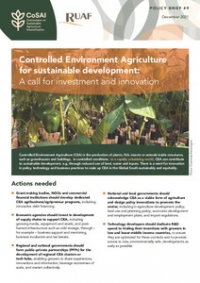The goal of this project is ensure affordable and sustainable access to drinking and agricultural water to women and men in mid hills of Nepal and Uttarakhand and Terai in Nepal. Farmers face economic and institutional water scarcity in these regions where water is plentiful, but inaccessible due to lack of rural electrification or irrigation infrastructure in the plains, or because springs are increasingly drying up, as in the mid hills. In order to improve the access of mountain communities and small and marginal farmers in Terai to water resources, new knowledge and technologies appropriate for them must be both rigorously tested in pilot studies and scaled up with support from stakeholders across the public, private and civil society sectors. Our project aims to test two approaches to addressing water insecurity in mid hills and plains of Nepal and India. For this, we will revive local springs in mid hills of Nepal and Uttarakhand and pilot solar powered irrigation pumps (SPIPs) in Nepal Terai. Moreover, we will ensure that these strategies are incorporated in local level Water Use Master Plans (WUMP), so that these are mainstreamed as development investments. We will achieve this by combining high quality research, implementation of pilots and policy advocacy based on the results of our fieldwork. The first objective of the project is to revive drying springs through state of the art understanding of localised spring hydrogeology; extensive mapping of all spring sources in the study areas; a comprehensive understanding of socio-economic, and policy, institutions and multi-layered governance aspects of spring management and through appropriate technical (e.g. spring shed catchment area treatment, or construction of recharge ponds) and policy interventions (e.g. linking welfare and poverty alleviation programs with earth work like pond excavation). The outcome of this will be springs that have been revived to provide ecosystem services to local mountain communities. Reviving springs is of particular importance to women, as women are tasked with gathering water for household purposes and when springs dry up, they must travel greater distances to collect water. Often, women from dalit castes are inordinately affected, as they are forced to collect water from lower yielding springs located in remote location, while better springs are reserved for upper castes. We will conduct the spring revival component of the project in the mid-hills in Nepal and Uttarakhand where springs dot the landscape. The second objective of the project is to promote SPIPs as a climate resilient and poverty alleviation solution to tackle the water-food-energy nexus issues in Nepal Terai. We will pilot 25-30, small sized SPIPs (500 watt peak to 1500 watt peak) in one or two districts in Terai and carry out high quality impact evaluation studies. Our SPIPs, being mobile and portable, are suitable for irrigating small, scattered land belong to small farmers. Nepal Terai has approximately 120,000 shallow tubewells and 90% of them run on diesel fuel – which is expensive and makes intensive irrigation uneconomic. Here alluvial aquifers are rich and very little of the groundwater has been actually tapped. SPIP can enable multiple cropping and better livelihood opportunities for women and men farmers. By targeting at least 30-50% of our solar irrigation pumps at women, we will develop an understanding of the policies and institutional frameworks required to support small female farmers in technology adoption. By testing a technology that reduces both pollution and GHGs, we are promoting a development strategy with significant potential for address environmental challenges confronting South Asia. The third objective is to incorporate components of spring revival and SPIP into community led WUMPs, which is being implemented in Nepal by Helvetas and will also be piloted in Uttarakhand for the first time in this project. WUMP, through a consultative process, maps all existing water sources and conducts detailed surveys on their condition in a VDC and then asks the community to prioritise these water sources for future investment – investment which then comes from the GoN through its funds allocated to Village Development Committees (VDCs) and District Development Committees (DDCs).
menu


















